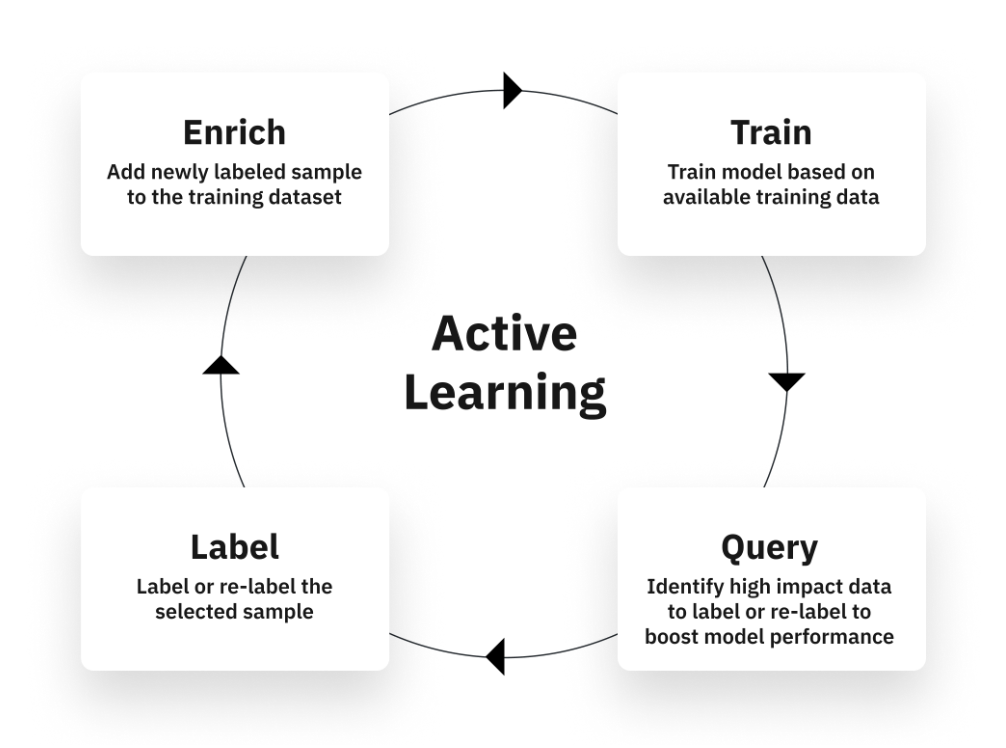Improve model performance through error analysis
Machine learning teams use error analysis to improve model performance. By systematically identifying mispredictions — where model predictions disagree with ground truth labels — ML teams can deliver targeted improvements to their training data and boost model metrics. Mispredictions are usually due to a model error (poor model prediction), a labeling mistake (ground truth is wrong), or both. Labelbox helps ML teams identify mispredictions, bucket them into patterns of failures, and fix these highest-impact themes. Here are some ways Labelbox helps fix high-impact model errors and label errors:- Surface model errors, find data that is similar to model errors, label it, and re-train the model on the new labels to fix the failure mode.
- Surface label errors, correct the labeling mistake, update model metrics, and re-train the model on the updated labels to fix the failure mode.
Improve model performance through active learning
Not all data is created equal. A crucial question for ML teams consistently emerges: Among all my unlabeled data, what should I prioritize for labeling? Active learning is the art and science of identifying what data will most dramatically improve model performance and feeding that insight into the prioritization of data for labeling. By focusing data labeling and data debugging efforts on the data that will most dramatically improve model performance, machine learning teams can save time and resources. Labelbox helps ML teams identify and prioritize high-value data to label.